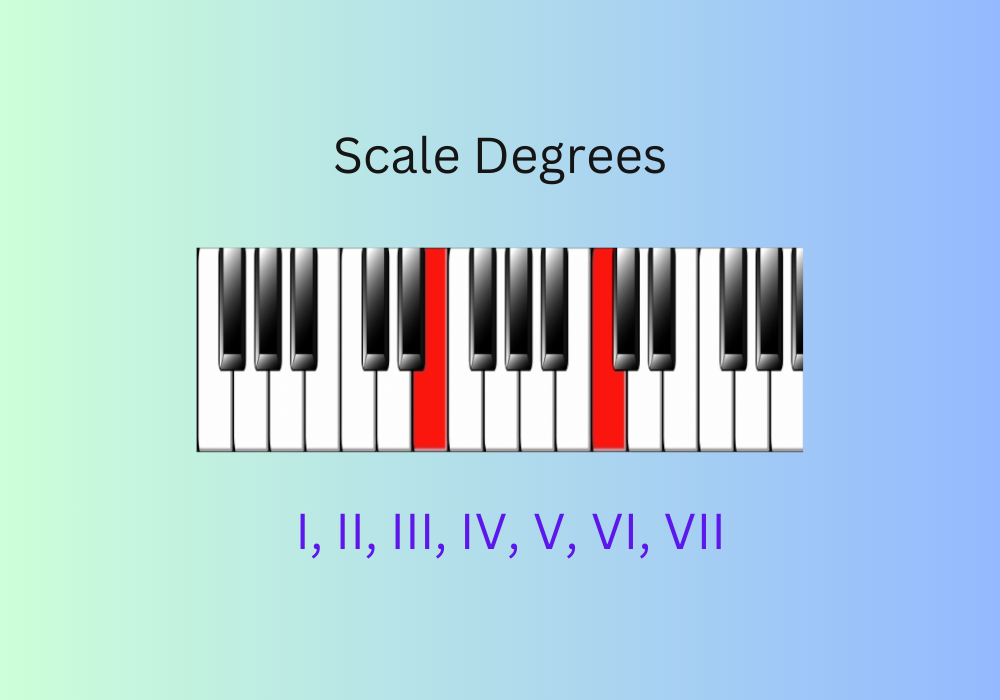
Are You in Tune with Scale Degrees?
Ok, today’s topic of the Piano Course will be scale degrees. Scale degrees refer to the positions of individual notes within a musical scale. They are usually represented by roman numerals to indicate their relationship to the tonic, which is the starting note of the scale.
So let’s see how that looks like in the C Major scale. On the first degree we have the tone C which is the tonic. And then we have the D on the second degree, E on the third degree, F – fourth degree, G on the fifth degree, A on the sixth and B on the seventh. There’s no eight degree, this C up is again the first degree.
In A minor A is on the first degree, B on the second, C on the third, D on the fouth, E is the fifth degree, F – sixth and G is the seventh.
Each scale degree has a specific function and characteristic sound (Playing the scale up and down). The first degree sounds like you’re at home. You feel peaceful, relaxed…The second degree is not peaceful, it wants to go somewhere…maybe up? The third degree wants to go somewhere…all the other degrees want to move until they get back home. And they all have a different feeling.
Now, on these degrees we can build chords. We still haven’t learned about chords so we’re going to build some intervals first. Let’s see the thirds in C-Major.
On the 1st degree we have a major third, 2nd – minor third, 3rd – minor third, 4th – major third, 5th – major third, 6th – minor third, 7th – minor third.
In A-Minor we have m3, m3, M3, m3, m3, M3, M3.
Now I’ll leave it to you to discover the rest of the intervals on every degree and to write them down. So start with the seconds on the first degree etc…we just learned the thirds, so find the fourths, the fifths and the sevenths. And for the sixths i will give you a good exercise for playing.
So we’ll start with the sixth on the third degree in C-Major we’ll build sixts all the way up until we finish with the pinky on the C here. At the same time with the left hand we’ll start from the first degree and on every other sixth we play with the right hand we’ll go one scale degree down until we finish on the C here.
Then we’ll go oposite direction until we go back to where we started.
Now i’ll play the same exercise in A-Minor.
Everything seems easy when we are in C-Major and A-minor. But when you start playing in different keys you must know immediately which type of interval on what degree to build.
So now, memorize this exercise very well and then when you learn to play it in C-Major and A-minor then comes the tricky part. I would like you to transpose it in every other key which we didn’t cover today. I will attach the order of the keys in the video downloads section.
I know that this transposition can be time consuming, but if you get into the habit of doing it with every exercise and also with your favourite tunes that you play you will raise above maybe 80% of the musicians in the world. Now you may say, well i have a button on my sythesizer that allows me to transpose my tune and it will be easier for me to play it. No, music always uses foreign tones. Tones that don’t belong into the scale. So even if you use your button to shift the key you will still have black keys to be played. So why not learn the proper way?
Homework Scale Degrees